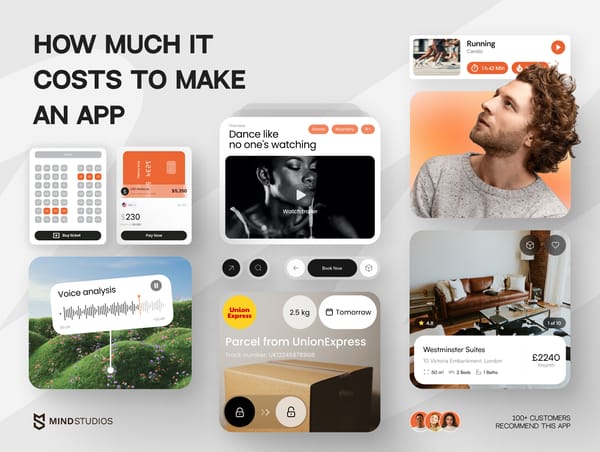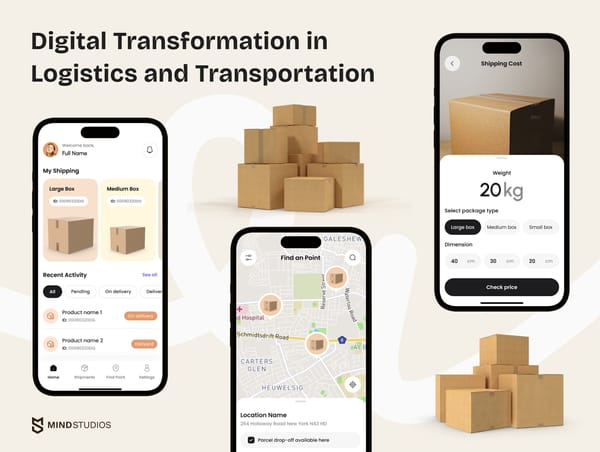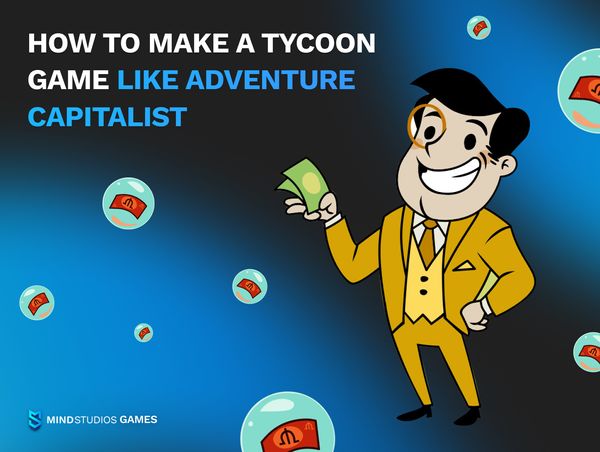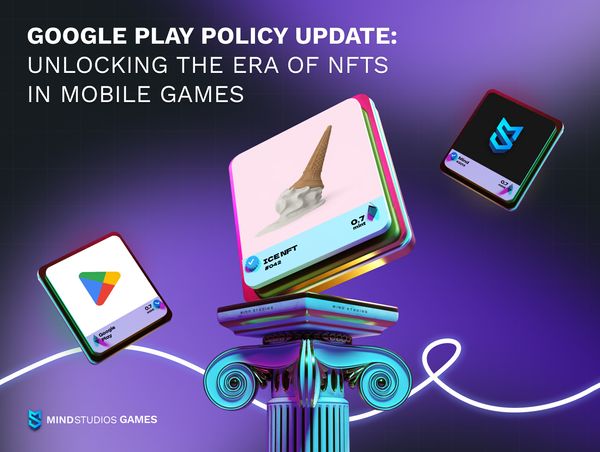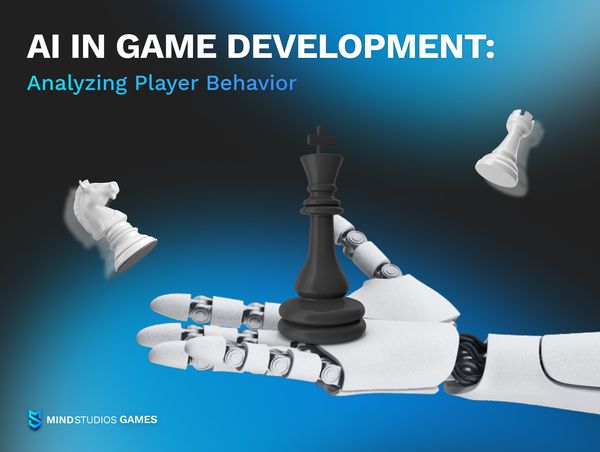If you’re someone with aspirations to break into the lucrative market of mobile gaming, understanding the complicated world of 3D game animation might be your ticket to success. After all, creating a captivating and immersive experience is paramount to make it in the rapidly evolving world of mobile gaming, and one of the things that can help greatly is animated characters and environments.
“Most people, when they think about game animation, imagine animated characters. While it’s undoubtedly the biggest and most noticeable result of the work animators do, there’s more to it.
Animation specialists breathe life into the game worlds surrounding the characters as well — by animating environments and objects. These often subtle parts contribute to world building and make characters’ stories shine.”— Andriy Koval, Mind Studios Games 3D artist lead
This technology breathes life into characters, environments, and interactions, transforming a static game into a dynamic and engaging adventure for players.
Whether you're envisioning a fantastical world teeming with creatures or a realistic urban landscape, knowing your way around 3D animation will be crucial to finding the best specialists to entrust your game to. 3D game animation plays a crucial role in creating immersive experiences, especially in real-time game development, where smooth and responsive animations can significantly impact gameplay.
In this article, we will use our years of experience in mobile game development to shed some light on 3D animation for games by exploring its core components and the pivotal role it plays in game development. It is our goal and hope that by the end of this guide, you will have the knowledge needed to make informed decisions as you embark on your game development journey.
Before we start, you might also be interested in another article of ours that covers the topic of 3D modeling for video games — since it’s a process preceding animation.
And now, let's dive in.
Key takeaways:
- Before getting to 3D game animation, it’s important to understand the processes preceding it;
- 3D animation specialists work with a wide range of techniques that affect the final look of the animated objects;
- Besides actual object animation, animators also require knowledge of scene composition, lighting, and camera movement;
- The selection of tools for 3D animation grows each year, reflecting the change in trends and the overall development in tech.
What does 3D animation process look like?
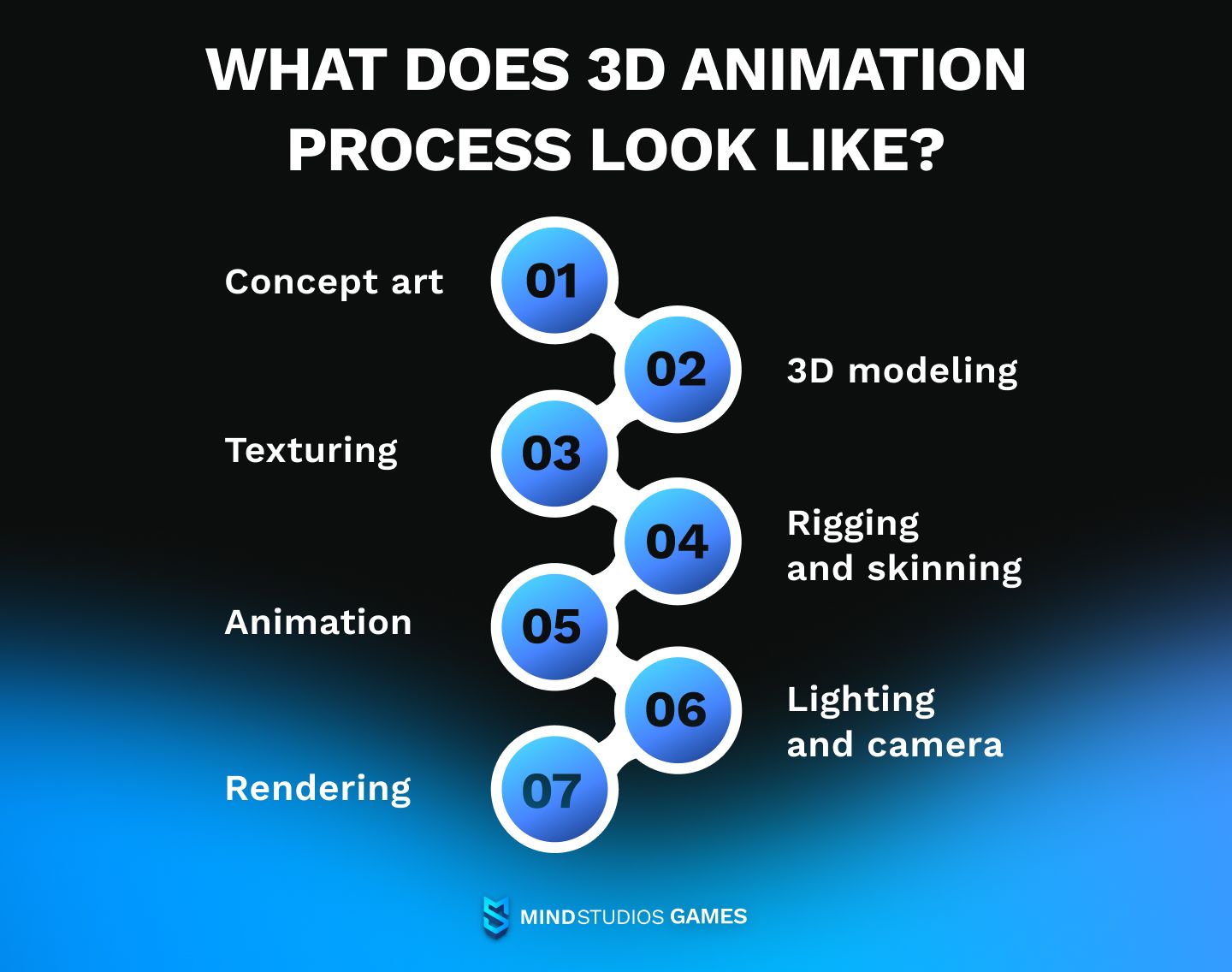
To answer the question “How does 3D animation work?”, it’s important to start before the actual animation process (and finish after it). Prior to animating your game, there are steps of preparation, and at least some of them are quite lengthy. Here’s a brief outline for you:
#1. Concept art
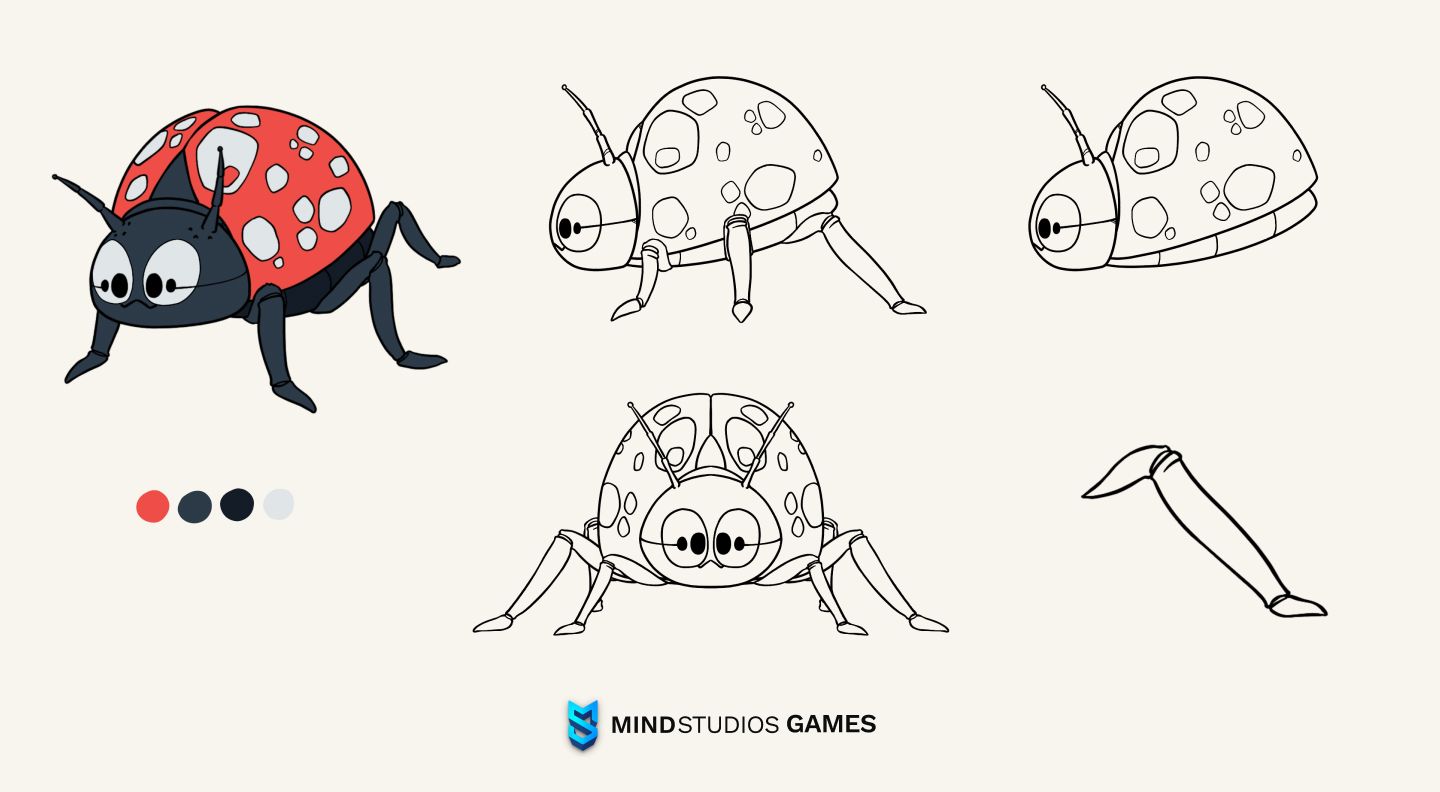
At the very beginning, you need to decide on how everything will look in your game. The main part is, of course, creating each character, but if your game’s setting feels like something out of Diana Wynne Jones’s worlds, you will also need to work on architectural concepts, for example. (Howl’s house is a pretty unique dwelling, isn't it?)
#2. 3D modeling
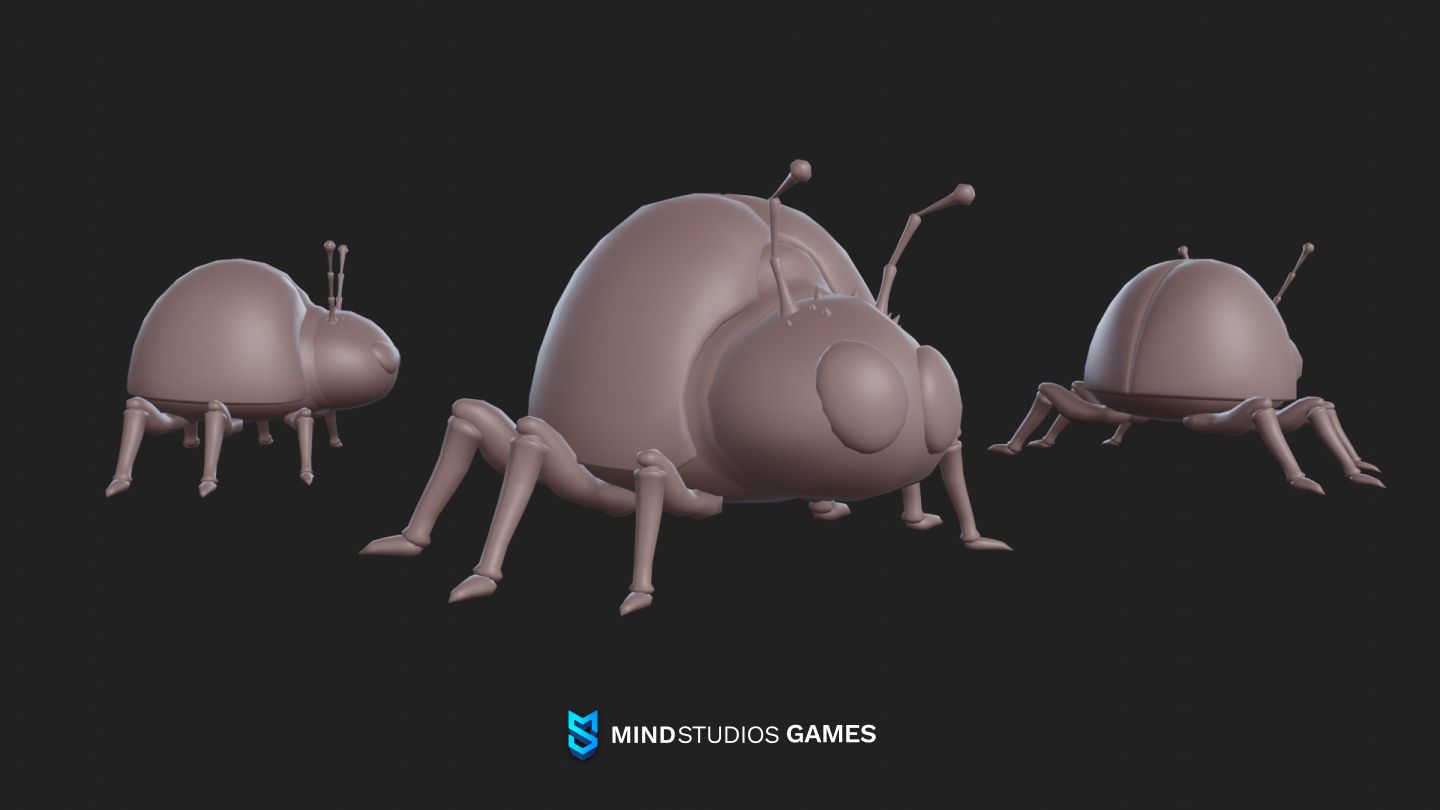
We’ve linked the separate article on the topic above, but this is the second stage of preparation for animation — translating concept art (which is basically a 2D sketch) into something with volume, a three-dimensional model. This is how characters and objects will look in a default static state. Initially, models aren’t colored and look like a sculpture.
#3. Texturing
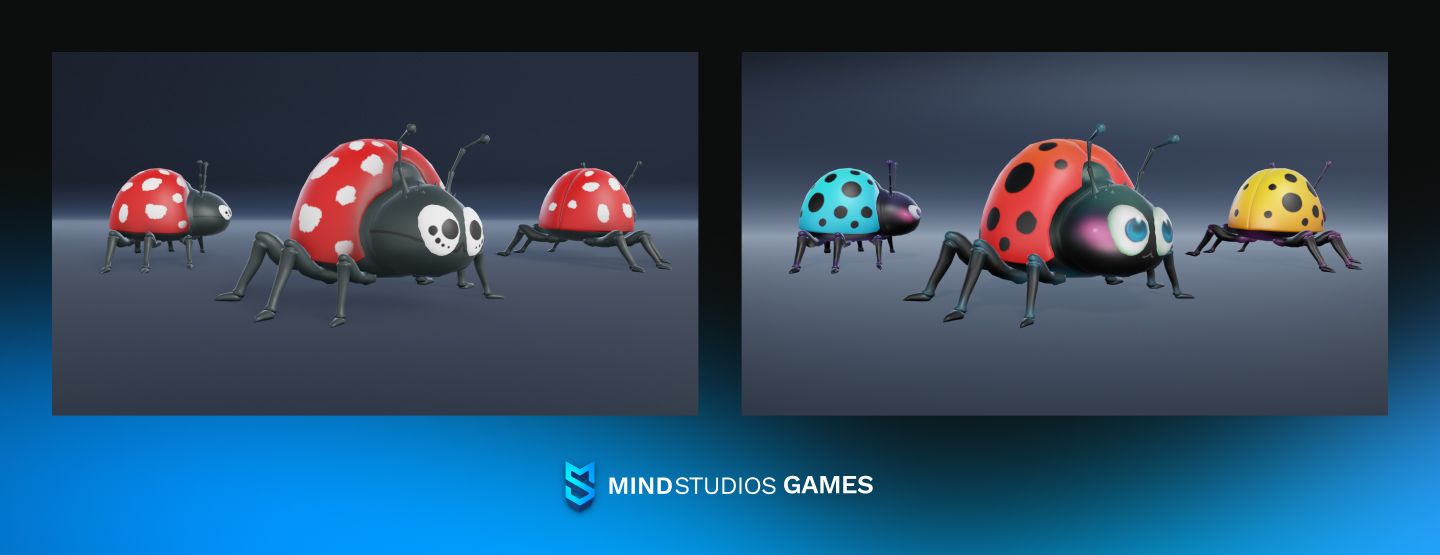
After the 3D model is complete, it’s colored and texturized in high-resolution detail to make it look exactly like it will in the game. The other name for this process you might encounter is mapping.
#4. Rigging and skinning
Rigging and skinning is the step right before the 3D gaming animation, and it’s basically the process of preparing a 3D model to be animated. It’s almost exclusively used in animation of characters — humanoids and animals — that have multiple joints that affect each other during movements.
Rigging is the process of creating a digital skeleton for a character model, setting up controls for animating the skeleton, and ensuring the model deforms correctly when animated. Skinning is binding said skeleton to the mesh that is the 3D model, for them to move in sync.
Animation of these skeleton rigs is also called skeletal animation, and we’ll talk about it below.
#5. Animation
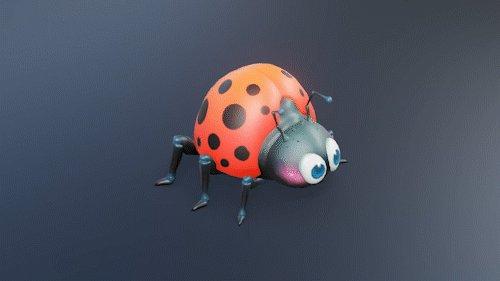
And only at this point we’ve come to the actual animation process. Now, there are several types of animation, we’ll cover them in the next section. Here, we’ll only say that there’s more than one way to animate a 3D model, some of them exclusive to characters (skeleton animation, motion capture) and others applicable to all kinds of game objects.
#6. Lighting and camera setting
Before the final rendering, the animated model undergoes treatment for added realism. The light source and camera position in the scene will affect the model’s look and feel. If your game allows camera rotation, characters and objects in the scene will look different based on these two parameters. If your game has the camera set in one position, moving the light source will also make changes to everything in the scene.
#7. Rendering
Rendering is putting together multiple animation sequences to create a scene, and putting scenes in order to create a smooth story. This is the final step in animation for games and movies. It can also include adding visual and sound effects, music, etc.
Now that we’ve explained the process, let’s venture into what types of 3D animation there are and how they can elevate your mobile game to new heights.
Types of 3D animation for games
As we’ve mentioned already, there’s more than one way to animate characters and objects in a video game. Here they are.
Keyframe animation
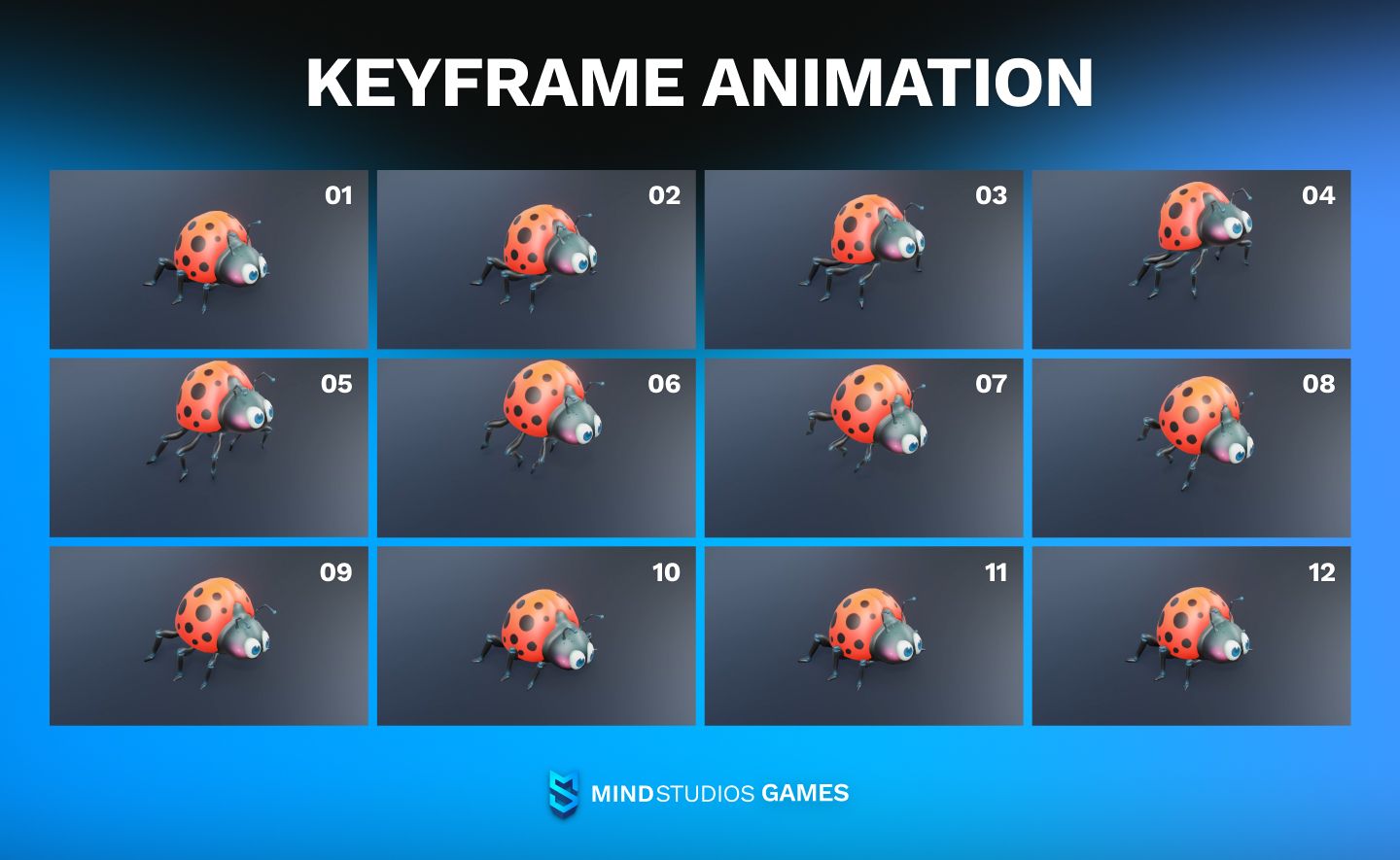
This is the classic animation technique. It’s mostly used in 2D animation, but it’s possible to animate 3D models with it as well. In a nutshell, it involves manually creating “key frames” of a model for each type of movement — e.g., position of limbs or rotation point of an object; the algorithm then interpolates the frames between these keyframes to create smooth motion.
To animate a character walking, keyframes might be set for the initial foot lift, mid-stride, and foot landing. The software calculates the in-between states, known as inbetweens or tweens, creating a fluid transition from one keyframe to the next.
This method allows animators to control the timing and movement of complex animations without having to manually animate every frame. Adjustments can be made by simply modifying keyframes, making the process efficient and flexible.
Skeletal animation
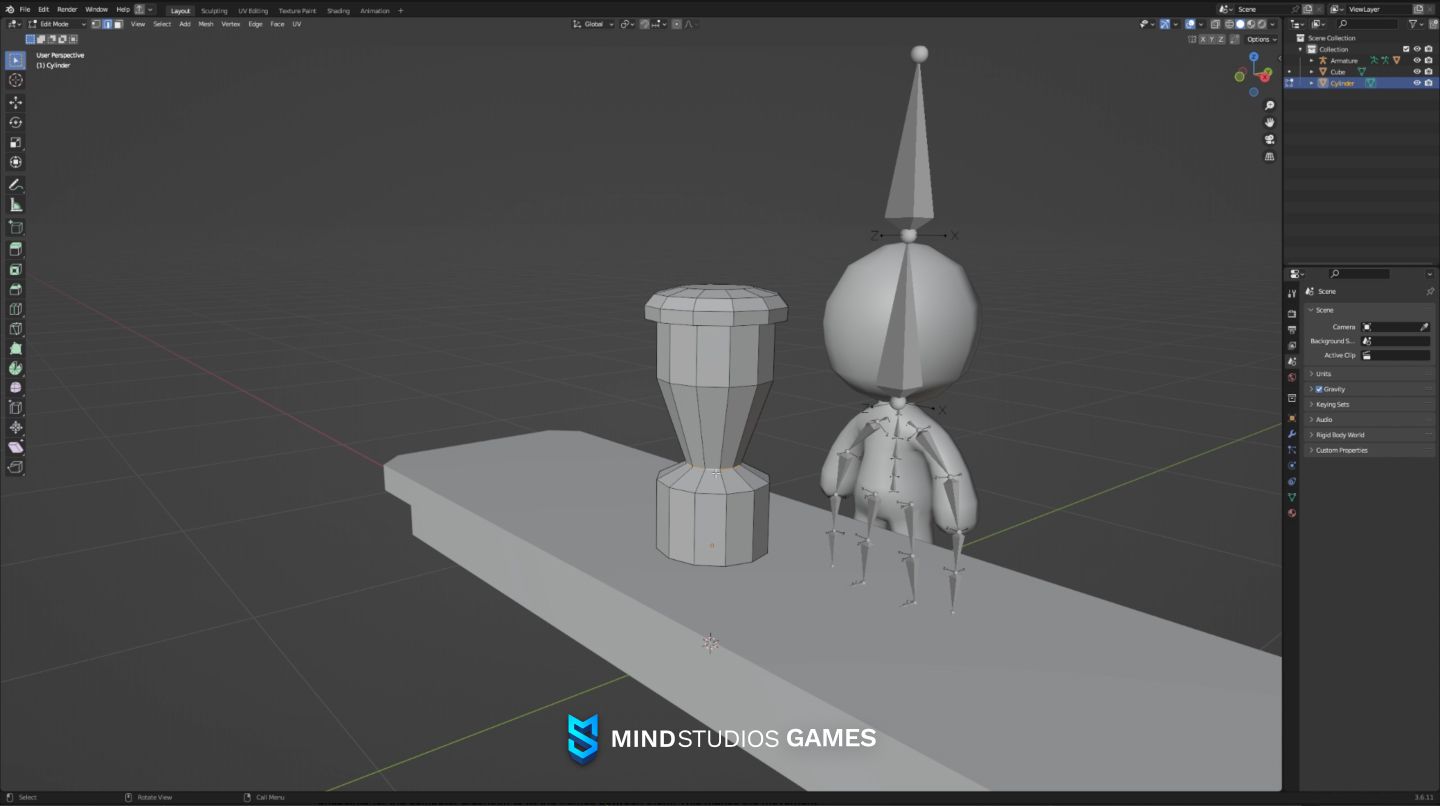
Probably the most used 3D animation technique these days, skeletal animation involves creating a “rig” — a kind of skeleton-like structure with joints that control “limbs” and can also affect each other. The rig is attached to the mesh that is the 3D model. When animation specialists move the joints, the mesh moves along with the rig.
Skeletal animation also involves keyframes, but instead of simply “jumping” between these frames real quick, like in keyframe animation, in skeletal animation, keyframes serve as endpoints for the computer algorithm to fill the frames between them. This makes the movement more fluid while reducing the time animators spend on it.
Another peculiar part of the skeletal animation is the forwards and inverse kinematics. Inverse kinematics (IK) is a technique that allows animators to move one end of a limb (like a hand or foot), and the computer calculates how the other bones should move to make this happen naturally. Forward kinematics (FK), on the other hand, is when the animator moves each joint separately.
For the best results, animation specialists combine the two techniques, creating a smooth and fluid realistic movement.
Physics-based animation
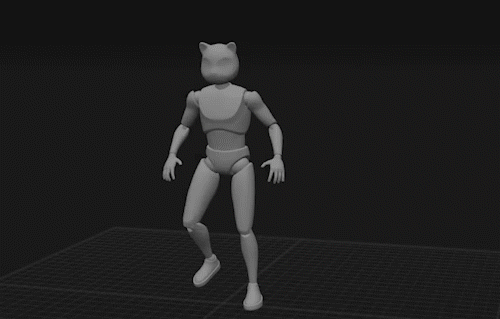
Source: Cascadeur Animation Software
Physics-based animation is a technique used in 3D animation for games to create more realistic movements and interactions by simulating the laws of physics.
The core of physics-based animation is the physics engine, software that calculates how objects move and interact based on physical properties and forces like gravity, friction, and collisions. Each object in the game has physical properties such as mass, velocity, and elasticity. These properties help the physics engine determine how the object behaves when forces are applied to it.
The physics engine simulates various forces acting on objects and can differentiate between simulating movement for solid and soft bodies. For instance, when a ball rolls or a box falls, their body dynamics simulation will differ from objects that can deform, like jelly or cloth.
Physics-based animation can enhance character movement. For example, ragdoll physics is used when a character is knocked out, allowing the limbs to move freely and realistically as they fall. This is calculated in real-time based on the character's mass and the forces acting on them.
Some animations are generated on the fly by the physics engine via procedural animation. For instance, if a character walks on uneven terrain, procedural animation can adjust the character’s steps to match the ground's surface in real-time, making the movement look natural.
Motion capture
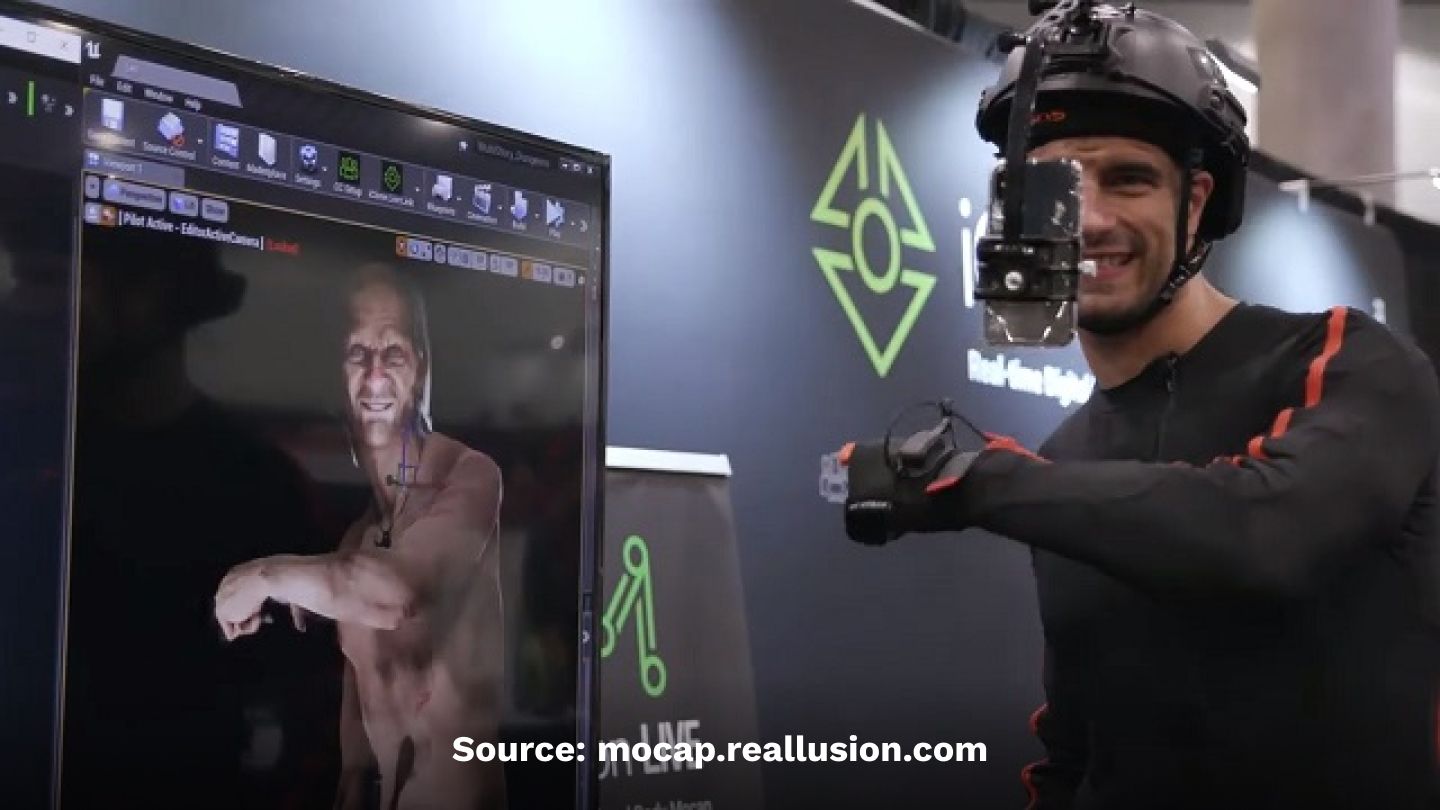
Source: Reallusion
Motion capture (mocap) is a technology used in 3D game animation to capture the movements of real actors and translate them into digital characters. This process involves placing markers on an actor's body and tracking them via cameras or sensors. The captured data is then used to animate 3D models in a realistic manner.
In video game development, mocap allows for the creation of lifelike animations for characters, enhancing realism and immersion. It is particularly useful for complex movements, such as fighting sequences, facial expressions, and nuanced gestures, which would be difficult and time-consuming to animate manually. The process ensures that in-game characters move naturally and convincingly, matching the actor's performance.
Cinematic animation techniques
Cinematic techniques in 3D gaming animation help create impactful storytelling and engaging cutscenes. These techniques borrow heavily from film and television, utilizing various elements to evoke emotions, build tension, and enhance the narrative. Here are some key techniques:
Camera movement |
Static cameras can build tension by keeping the viewer focused on a single point, while moving cameras can follow the action, revealing new details and keeping the audience engaged. Dynamic camera angles can enhance the drama and focus on important elements within a scene. A low-angle shot can make a character look powerful, while a high-angle shot can make them appear vulnerable. Tracking shots follow a character or object, creating a sense of continuity and immersion. They are particularly effective in action sequences. |
Lighting |
High-key lighting technique uses bright, even lighting to create a cheerful and open atmosphere in scenes that are meant to feel safe or positive. On the other hand, low-key lighting utilizes shadows and contrast to create a more dramatic, mysterious, or tense atmosphere. It's commonly used in horror or suspenseful scenes. Directional lighting highlights specific parts of a scene or character to draw attention and convey importance or emotion. Finally, color temperature affects the mood in subtle ways. Warm lighting (reds, oranges) can create a sense of warmth and comfort, while cool lighting (blues, greens) can evoke feelings of coldness or alienation. |
Scene composition |
Scene composition is the arrangement of elements in the scene. This includes characters, objects, and environment. Different compositions are used for different kinds of scenes. The four main types of scene composition are:
|
Special effects and post-processing |
Special visual effects (VFX) are often added for dramatic impact. For example, particle effects are used to simulate phenomena like smoke, fire, rain, and magic, adding a layer of realism and visual interest to scenes. Techniques like color grading, bloom, and vignette effects can enhance the visual style and mood of a scene. And slow motion can heighten the impact of dramatic moments, giving the audience time to absorb the details of a significant action. |
Tools and software
So, what video game animation software is popular today? Here’s a selection from our animators.
Blender

Blender is an open-source 3D modeling, animation, and rendering software. It is a powerful and versatile tool that has gained significant traction thanks to its robust feature set and free availability. Most animation specialists are introduced to Blender when they learn how to do 3D animation.
For a free tool, Blender is top-notch, which makes it a choice of indie game developers like us at Mind Studios Games. It has a solid animation toolset with keyframing, non-linear animation, and character rigging, as well as physics-based simulations like smoke, fluids, and particles.
Blender’s own render engine, Cycles, also supports ray tracing.
Unity animation

This is a collective term for animation tools and features integrated within the Unity game engine. Since we’re using Unity to develop our games, we’re of course familiar with its animation tools.
The biggest advantage of these animation tools is, obviously, the seamless integration into the engine. But there are other reasons to choose Unity for animation. The engine has advanced rigging setups, enabling real-time procedural animations. A suite of camera tools allow for dynamic camera behavior and control. There’s also a cinematic editing tool that can be used for the sequencing of animations, audio, and other game events.
There are, however, drawbacks. Since Unity is a game engine first and foremost, not a tool exclusively for graphics and animation, using it for complex animations might require scripting knowledge. At the same time, some of its advanced animation features are less powerful than analogs in dedicated 3D animation software.
Autodesk Maya

Maya is an industry-standard tool and has a wide selection of features. However, it has a steep learning curve and is quite expensive, which lowered its popularity among freelance artists and animators as well as indie game developers.
It does handle high-fidelity animation and visual effects rather well, though, and has tools for creating realistic simulations of things like as cloth, hair, and fluid dynamics. It also supports motion capture.
Houdini

Houdini stands out as a tool for 3D game animation and visual effects due to its procedural nature and powerful simulation capabilities. Its ability to handle complex and dynamic effects makes it a favorite among VFX artists.
Houdini's node-based procedural workflow allows artists to create and modify content dynamically. This means changes can be made to the process without having to redo the entire workflow, saving time and increasing flexibility. It has advanced fluid simulation tools for things like water or lava, as well as robust tools for simulating realistic cloth and hair dynamics. It’s also often useful for creating immersive VR experiences.
Whether it's crafting stunning cinematic effects or generating procedural game environments, Houdini's versatility and robustness make it an invaluable asset in the 3D animator’s toolkit.
Industry trends and insights
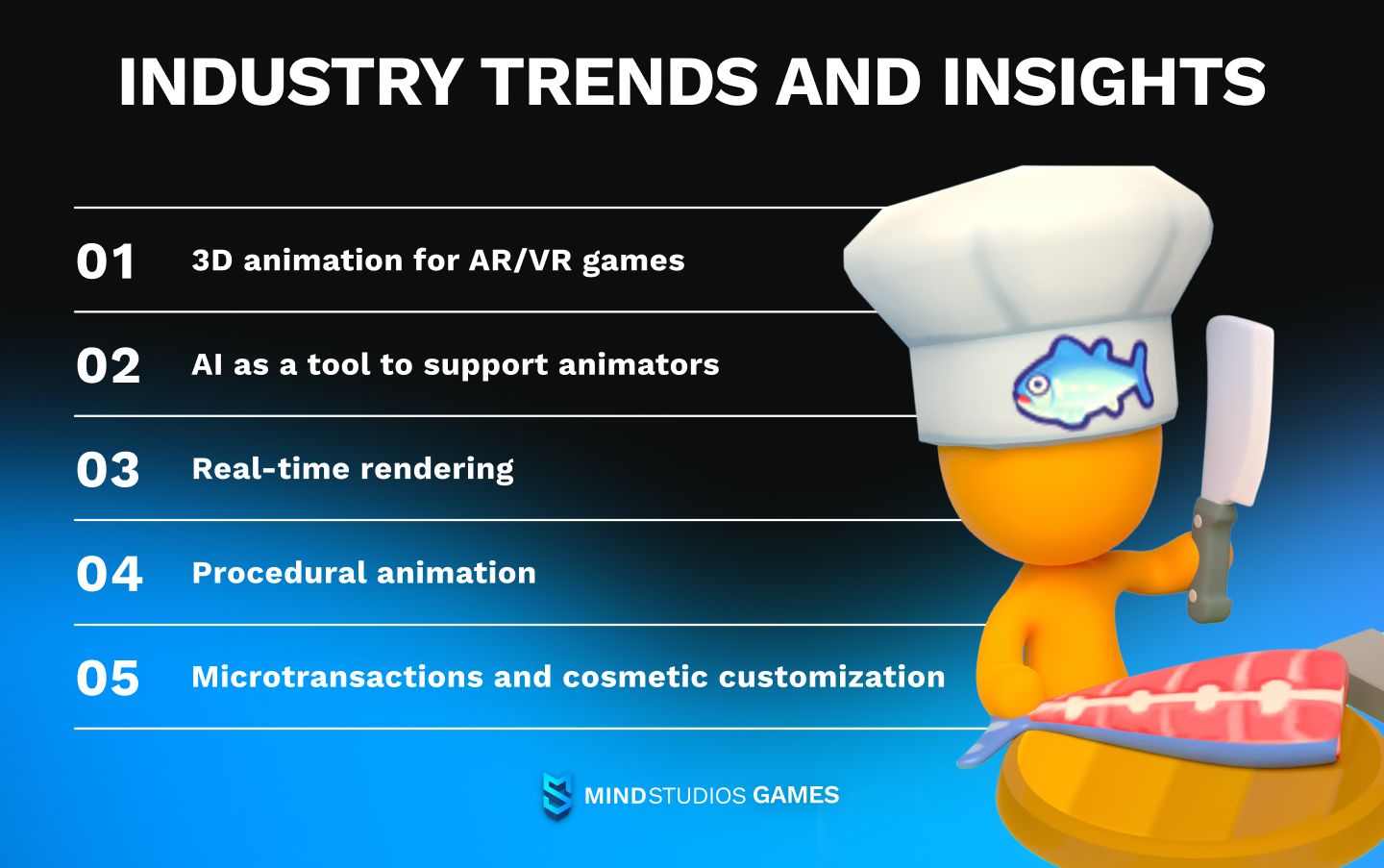
So what’s in store for this year and beyond in the 3D game animation industry? The trends say the following:
- 3D animation for AR/VR games. Artificial and virtual reality are trending across industries, and gaming is the leader in this. AR is especially popular in mobile games, and creating and integrating assets for AR-enabled games is a new and exciting challenge for 3D animation specialists, among others.
- AI as a tool to support animators. AI and machine learning are being used to create more realistic and context-aware animations. AI can help in predicting and animating complex movements, reducing the workload on animators and enhancing the gameplay experience.
- Real-time rendering. Mobile devices are becoming more powerful, allowing for real-time rendering with high-quality graphics. This includes advanced lighting, shadows, and reflections, enhancing the visual fidelity of mobile games.
- Procedural animation. Procedural animation is the use of algorithms to automatically generate animations in real-time, allowing for more dynamic and responsive character movements, which adapt to the game environment and user interactions.
- Microtransactions and cosmetic customization. Many mobile games now include microtransactions for cosmetic items, including unique animations. Players can purchase new idle moves, emotes, and other animations to personalize their characters.
These trends show a combination of tech advancements and evolving player preferences, driving the development of more immersive, engaging, and visually appealing mobile games.
At Mind Studios Games, we always try to stay in the loop of everything new in the game development industry, and that, of course, includes 3D animation for games. For example, one of the projects working on is about creating 3D models for a VR-enabled game. While this direction is new to us, our 3D artists and animators are dealing with it swimmingly. In fact, they’re having quite a lot of fun 😀
Conclusion
The 3D animation market is expected to reach $7.98 billion by 2025 in US only. Not all of it is 3D animation for games, but approximately 60% of revenue in the industry comes from games and entertainment. In 2021, about 40% of all 3D animation services provided were for character animation, and this number was most likely only growing.
The rapid advancement of technology brought us game development tools that make phenomenal 3D animation, even when it’s for mobile games. And mobile devices are also evolving fast. Already, even the most sophisticated PC and console games are being ported to mobile devices, and animation specialists feel freer when they work on mobile games.
With the world moving at a pace it is moving, the emerging video game animation software will help professionals create even more immersive and stunning animations very soon. And we’re so hyped for that!
If you’re looking for a team that keeps their eyes wide open and is always looking for opportunities to create the best 3D game animation possible, check us out. Mind Studios Games offers both full-cycle game development and separate art-related services, including 3D animation for mobile games.

